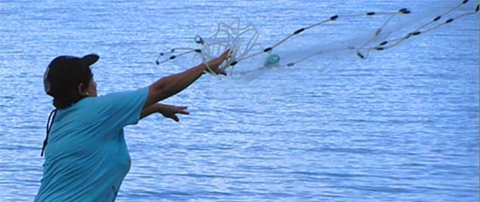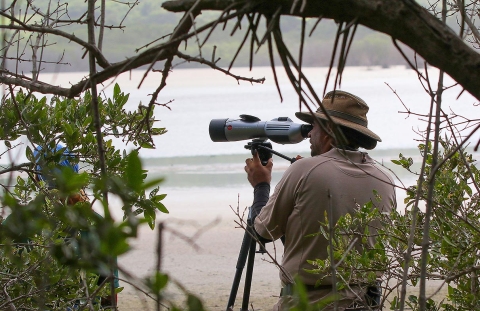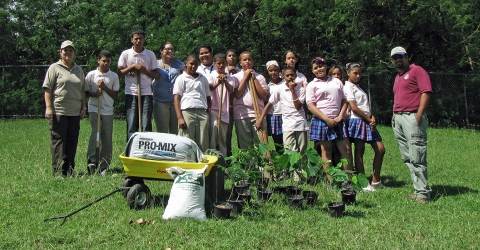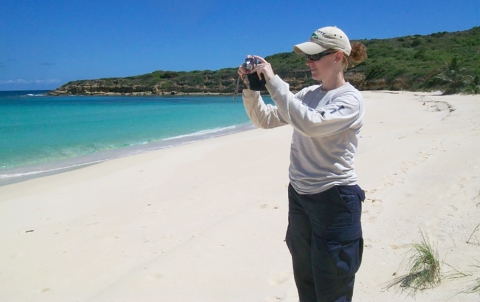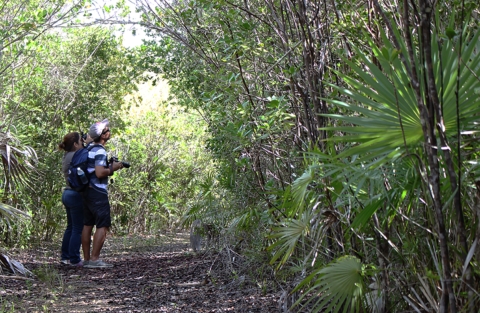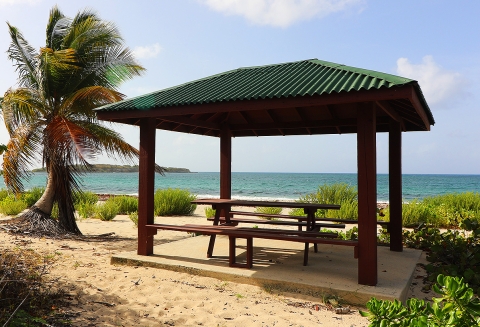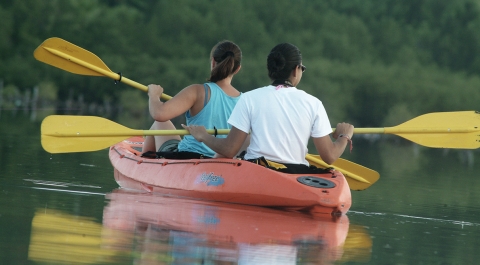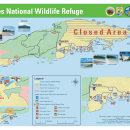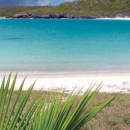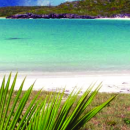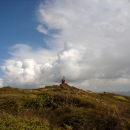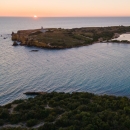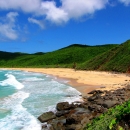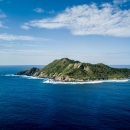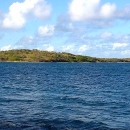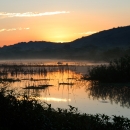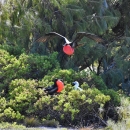Visit Us
All local, State, and Federal regulations apply on the refuge. Specific refuge regulations are addressed in Title 50 of the Code of Federal Regulations.
The following regulations apply to those Vieques NWR areas that are open to the public:
- Keep your pet on a leash.
- Maintain an orderly conduct.
- Obey traffic laws and comply with established speed limits.
- Persons possessing, transporting or carrying firearms on the Refuge must comply with state and local laws and refuge regulations (50 CFR 27.42 and 50 CFR Part 32).
- Commercial filming, photography or any other commercial activity within the Refuge requires a Special Use Permit from the Refuge Manager.
It is Prohibited:
- Driving under the influence of alcohol or controlled substance.
- Destroying or removing any public or private property.
- Open fires and/or camping
- Removing or searching for objects of antiquity
- Constructing, installing or occupying a private structure structure
Something temporarily or permanently constructed, built, or placed; and constructed of natural or manufactured parts including, but not limited to, a building, shed, cabin, porch, bridge, walkway, stair steps, sign, landing, platform, dock, rack, fence, telecommunication device, antennae, fish cleaning table, satellite dish/mount, or well head.
Learn more about structure . - Driving off road
- Flying drones
- Littering and/or dumping garbage
- Removing any plants and/or animals, and harassing wildlife or Endangered Species.
- Tampering with any private or public vehicles or equipment
Note: The areas not open to the public shall not be visited by land or sea at any time
Activities
Recreational activities at the open to the public areas include bicycling, hiking, horseback riding, wildlife observation, wildlife photography, environmental education and interpretation. In addition, our visitors will be able to do kayaking, fishing, snorkeling, and SCUBA diving at the beaches and lagoons.
Besides enjoying our natural areas, visitors have the opportunity to participate in ranger led interpretive programs and activities throughout the year.
ACTIVITIES:
Fishing
Fishing is allowed in the bays, beach areas and lagoons located outside of the restricted areas. Fishing activities must be in accordance with all applicable Commonwealth laws and federal regulations. The refuge also has a night fishing program.
Wildlife Viewing
The trails offer opportunities to view or photograph an assortment of wildlife, and beautiful scenic views. Bird watching, is excellent throughout the year (though in winter we receive more migratory species). Most land species are small but one can see a number of reptiles, butterflies and other invertebrates. Large fauna such as manatees, sea turtles, dolphins, sharks and other fish can be seen in the waters around the refuge.
Environmental Education & Interpretation
Besides enjoying natural areas, our visitors have an opportunity to participate in ranger led interpretive programs and activities or enjoy self-guided field trips throughout the year. Throughout the year the VNWR conducts talks, workshops and field trips focused on environmental conservation.
We enjoy and love to be in contact with nature and to teach in a classroom without walls. With this in mind, we encourage educators and community groups to utilize the Vieques NWR as an outdoor educational experience. The Wildlife Refuge offers environmental education programs through workshops, talks and field trips to schools, summer camps, Boys and Girls scouts, 4H groups, nonprofit organizations, universities, and federal and state agencies, among others. These programs are free of charge and could be adapted according to the school curriculum and the age of the students.
Photography
Recreational photography is permitted at the Vieques NWR during visitor hours. A variety species of plants, animals and landscape views, as well as beautiful beaches, hills, trails, among other areas, are excellent scenarios for photography lovers. We encourage you to leave only footprints, and take a lot of photos! Commercial photography and filming at the Vieques NWR require a special use permit.
Biking, Hiking & Horseback Riding
Bicycling, hiking and horseback riding are great ways to get closer to nature and view wildlife at the Vieques NWR. These activities are allowed on designated public roads and trails. Some trails are multi-purpose, while others are limited to hiking or biking only. Bicycle riding and horseback riding are not allowed on any of the beaches; yet in some sections of trails, folks may walk their bikes along the shore to re-connect with the bike trail. Please remember to stay on the roads or trails, obey traffic regulations and always carry drinking water. Always carry a lock to secure your bike, when left unattended.
Picnicking
A few areas of the Vieques NWR offer picnicking opportunities for individuals, families or other groups. There are several gazebos, many of them with grills, where folks enjoy cooking and recreating outdoors.
Aquatic Activities
TheVieques NWR have access to beautiful beaches, bays and lagoons. Our visitors partake in swimming, snorkeling and SCUBA diving, which are excellent ways to view and photograph a variety of underwater wildlife and habitats. Canoeing, kayaking and paddle boarding are common activities in these waters and they provide quiet passage through bays, lagoons and mangrove forests where visitors can be in direct contact with nature and a variety of wildlife. The Vieques NWR also borders with the famous Puerto Mosquito Bioluminescent Bay, managed by the Puerto Rico Department of Natural Resources (DNER). This bay is a wonderful natural treasure, visited by people from all over the world.
Trails
Title: Puerto Ferro Trail (East)
Open: Year Round
Length: .29 mi
Loop Difficulty: Easy
Location of Trail Head: Puerto Ferro Peninsula
Description: The Start of the trail is at the second parking lot of Puerto Ferro Peninsula. This trail will take you the Historic Puerto Ferro Lighthouse. There is a small trail to the Puerto Ferro Beach on the left side of the Lighthouse.
Title: Puerto Mosquito National Natural Landmark National Natural Landmark
The National Natural Landmarks Program preserves sites illustrating the geological and ecological character of the United States. The program aims to enhance the scientific and educational value of the preserved sites, strengthen public appreciation of natural history and foster a greater concern for the conservation of the nation’s natural heritage. The program was established in 1962 by administrative action under the authority of the Historic Sites Act of 1935. The first National Natural Landmarks were designated in 1963. Today, there are more than 600 National Natural Landmarks in 48 states, American Samoa, Guam, Puerto Rico and the U.S. Virgin Islands.
Learn more about National Natural Landmark Trail (East) - (From Entrance Parking Lot)
Length: 2.5 mi total triangle hike
Loop difficulty: Moderate
Location of Trail Head: VNWR entrance parking lot
Description: Hiking Trail to Observation Platform with a view of the Puerto Mosquito National Natural Landmark, including the Puerto Mosquito Bioluminiscent Bay, and Puerto Ferro Bay, among others.
Title: Playuela Trail (East)
Length: .42 mi
Loop Difficulty: Easy
Location of the Trail Head: Parking lot at the entrance of Playuela Trail (18°06'48"N 65°24'52"W)
Description: This is an ecotone trail, between dry forest and mangrove forest. Habitat for warblers, ducks, shorebirds and bats. This trail will get you to Playuela Beach.
Title: Cerro Playuela Trail (East)
Length: .95 mi
Loop Difficulty: Moderate
Location of the Trail Head: Parking lot at Cerro Playuela entrance (18°06'24"N 65°25'26"W)
Description: This trail will take you uphill from the mangrove forest to a dry forest. From the top of the hill, you can go to Corcho Beach, to a south cliff with view of the Caribbean Sea and to Playuela Sandy Beach.
Title: Tapon Trail (East)
Length: .85 mi
Loop Difficulty: Moderate
Location of the Trail Head: Tapon Bay Parking Lot (18°06'38"N 65°24'35"W
Description: Habit for different bird species such as warblers and shore birds. Excellent hiking trail through mangrove forest that connects you to Caracas Beach.
Title: El Pobre Trail (West)
Length: .5 mi
Loop Difficulty: Easy
Location of the Trail Head: Punta Arenas Main Road Entrance (18°07'09"N 65°33'20"W)
Description: This trail will take you to a Mangrove forest where you can see endemic or migratory birds. Ends at the Kianí Lagoon mouth entrance.
Related Documents
Driving Directions to the Vieques NWR
In order to get to the Vieques, needs to take a plane or boat from Ceiba, PR
From Antonio Rivera Rodriguez Airport, on PR-200 head east onto road PR-997. At PR-997 turn right (South towards Esperanza) continue to 3.2 km and turn left onto the east gate entrance of the VNWR. The Administrative Building and Visitor Center will be on the left.
From the Vieques Ferry Terminal, head toward Calle Benitez Castano. Continue to follow PR-200R and at the “Y” intersection with PR-997your will see a TOTAL Gas Station. Turn south at PR-997, towards Esperanza. At 3.2 km take a left onto the east gate entrance of the VNWR. The Vieques NWR Administrative Building & Visitor Center will be on the left.
Main Entrance – Eastern Side (Main Office) : 18° 7'15.82"N / 65°26'15.83"W
Main Entrance – Western Side (Punta Arenas) : 18° 7'0.82"N / 65°33'5.46"W
Main Entrance – Western Side (Monte Pirata) : 18° 6'13.66"N / 65°33'12.59"W
Main Entrance - Western Side (Playa Grande) : 18° 5'36.97"N / 65°30'26.02"W
Other Facilities in the Complex
Vieques National Wildlife Refuge is one of many refuges that make up the Caribbean Islands National Wildlife Refuge Complex. Each refuge in the complex plays vital role to conserving our unique, endemic species and resources in the Caribbean.
Rules and Policies
All local, State, and Federal regulations apply on the refuge.
Specific refuge regulations are addressed in Title 50 of the Code of Federal Regulations.
The following regulations apply to those Vieques NWR areas that are open to the public:
- Keep your pet on a leash.
- Maintain an orderly conduct.
- Obey traffic laws and comply with established speed limits.
- Persons possessing, transporting or carrying firearms on the Refuge must comply with state and local laws and refuge regulations (50 CFR 27.42 and 50 CFR Part 32).
- Commercial filming, photography or any other commercial activity within the Refuge requires a Special Use Permit from the Refuge Manager.
It is Prohibited:
- Driving under the influence of alcohol or controlled substance.
- Destroying or removing any public or private property.
- Open fires and/or camping
- Removing or searching for objects of antiquity
- Constructing, installing or occupying a private structure structure
Something temporarily or permanently constructed, built, or placed; and constructed of natural or manufactured parts including, but not limited to, a building, shed, cabin, porch, bridge, walkway, stair steps, sign, landing, platform, dock, rack, fence, telecommunication device, antennae, fish cleaning table, satellite dish/mount, or well head.
Learn more about structure . - Driving off road
- Flying drones
- Littering and/or dumping garbage
- Removing any plants and/or animals, and harassing wildlife or Endangered Species.
- Tampering with any private or public vehicles or equipment
Note: The areas not open to the public shall not be visited by land or sea at any time.
Locations




















